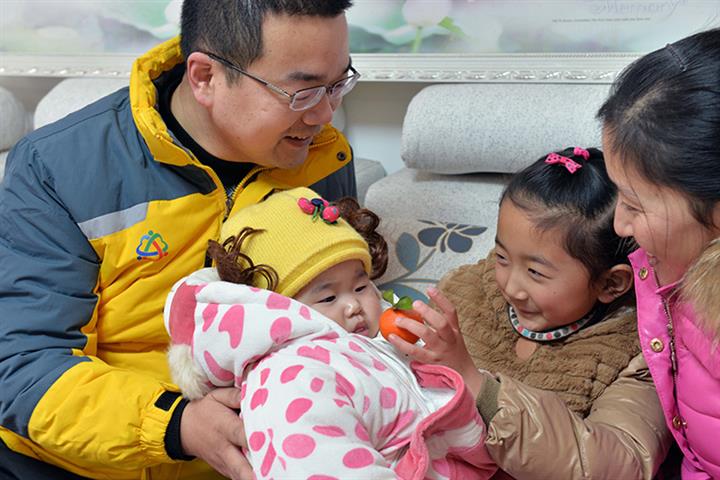 More Measures Are Needed to Get Chinese Couples to Have Babies, Experts Say
More Measures Are Needed to Get Chinese Couples to Have Babies, Experts Say(Yicai Global) Dec. 10 -- China’s dwindling birth rate in a rapidly aging population is becoming an increasing dilemna. The heavy economic burden, the irreversible effect on their careers and the lack of time for themselves are making women in the world’s most populous nation shy away from having children. More needs to be done to address this, academics say.
China’s birth rate has been falling for the last 30 years. Last year there were an average of 1.47 births per woman. It should be closer to 1.8 in order to more closely match the country’s economic development, said Cai Fang, vice president of the Chinese Academy of Social Sciences. The 14th Five-Year Plan (2021 – 2025) needs to encourage families to have more children, she added.
High direct and indirect childbearing costs are the primary factors discouraging women, Zhang Yi, researcher at the School of Public Economics and Administration of Shanghai University of Finance and Economics, told Yicai Global.
The direct costs include education, housing and childcare, and the indirect costs include the time spent looking after the kids and the damage to their careers. As a rule of thumb, having two or more children greatly affects women’s employability and the result is irreversible.
Liu Yun used to work for a well-known foreign company, but she was laid off soon after she gave birth to her second child three years ago. She became a full-time mother because she was unable to find a fulfilling job.
Wang Rong, a migrant worker in Guangdong, had to take her two children back to her hometown in Sichuan province to raise them herself because the cost of living and schooling in the city was too much.
The motherhood penalty can last for about two years, according to a study by Jiang Tian and Duan Zhimin at the School of Statistics of Tianjin University of Finance and Economics. Child-rearing women experience significant disadvantages in terms of pay, perceived competence and perceived benefits relative to childless women.
Educational level is a big factor in affecting women’s fertility rate, said Wang Guangzhou, a researcher at the Institute of Population and Labor Economics at the Chinese Academy of Social Sciences. Women with more degrees tend to have fewer children.
Two-Child Policy
China's two-child policy, introduced in 2016, has been detrimental to career women, Wang said. It has intensified the conflict between realizing one's own value and the family's reproductive function. Many women choose not to have children.
Ding Yi, who graduated from a prestigious university and has a job in finance, decided not to start a family with her husband. She believes that children are not an indispensable part of life. It takes a lot of time and energy to nurture children, which conflicts with her own needs and desires, she said.
The two-child policy has led to more discrimination against women in the workplace. Zhao Sheng, chief executive officer of online recruiter Zhaopin.com, said previously. Many companies ask female employees to declare how many children they have when applying for a job.
The two-child policy is mainly having an effect in underdeveloped rural areas, Zhang said. It is not beneficial to the long-term development of the country to sacrifice the caliber of children for a limited rise in the fertility rate, she added.
It is imperative that barriers that affect reproductive rates are removed and measures are taken to encourage childbirth, Wang said, adding that otherwise the fertility of women of childbearing age is likely to stay around 1.4 in the future.
Measures to address the high cost of childbearing, child raising and schooling have been included in the 14th Five-Year Plan, Wang said. How to implement them will be the next problem, she added.
Editor: Kim Taylor